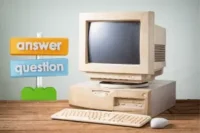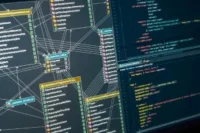Protect Your PC: 10 Common Types of Computer Viruses to Avoid
Published: 26 Feb 2025
If your computer is slow or continually displays annoying ads, you might be dealing with a virus. But which type is it? With so many different types of viruses in computers out there, it’s easy to get overwhelmed. Don’t worry, though. If you know about the various types of laptop computer viruses, you can find them before they do anything harmful.
Whether it’s sneaky spyware that monitors your activity or the obtrusive adware that clutters your screen. This article will teach you what you need to know to stay safe and aware of any viruses hiding on your device.
Common Types of Computer Viruses
There are many kinds of computer viruses, each with a unique purpose for causing harm to your system. Some viruses slow down your laptop, while others steal or corrupt files.
- Boot Sector Virus
- Web Scripting Virus
- Browser Hijacker
- Resident Virus
- Polymorphic Virus
- Direct Action Virus
- File Infector Virus
- Macro Virus
- Multipartite Virus
- Network Virus
Here is a list of 10 common computer laptop viruses. Let’s discuss how they work, how they spread, and the damage they can cause.

1. Boot Sector Virus
A boot sector virus infects the master boot record (MBR) on your hard disk, which is required to boot your computer. When an infected system boots, the virus gets into memory, making it difficult to erase. Although these viruses were more widespread when floppy disks were used, they can still spread via infected USB drives, external hard drives, and even email attachments with malicious boot sectors.
2. Web Scripting Virus
Web scripting viruses use security flaws in web browsers to run harmful programs. When a user visits an insecure website, the script is executed automatically, allowing hackers to steal login information, change website content, or install malware on the user’s device. These viruses spread by scam campaigns, pop-ups, phishing sites, and unverified online downloads.
3. Browser Hijacker
A browser hijacker changes your web browser settings without your permission. It may redirect searches to unsafe sites, show unwanted ads, or install harmful extensions and toolbars. These infections frequently enter systems via bundled software installations, misleading browser notifications, or fake download URLs that fool users into granting permissions mistakenly.
4. Resident Virus
A resident virus integrates into a computer’s RAM (memory), enabling it to carry out destructive acts repeatedly. Even if you delete the infected file, the virus remains in memory and spreads to other files and programs. These viruses can severely reduce speed, cause system crashes, and corrupt essential files, making them one of the most difficult to remove.
5. Polymorphic Virus
A polymorphic virus is adaptable since it modifies its code every time it attacks a new file, making it more difficult for antivirus software to detect. These viruses are spread by infected email attachments, malicious downloads, and compromised website URLs. Polymorphic viruses constitute a significant security issue due to their capacity to adapt and ignore detection, necessitating powerful antivirus software to detect and eliminate them.
Related Article👇👇
Explore Different Laptop Types
8 Different Types of Microphones
10 Types of Computer Keyboards
Discover the Different Types of Webcams
10 Types of Speakers and Their Uses
Discover the Laptop Screen Types
Types of Laptop Processors Learn Intel Core, Dual Core, AMD
6 Types of Motherboards Explained – Make the Right Choice!
10 Types of Laptop Ports | Which Ones Do You Really Need?
10 Different Types of Computer Mouse
Types of Laptop Chargers Explained
Explore All Laptop Accessory Types
Top 5 Types of Laptop Bags for Students and Professionals
Types of Laptop Battery: Understanding Li-ion, LiPo, & More
6. Direct Action Virus
A direct-action virus activates instantly when an infected file is executed. It doesn’t stay in memory but rapidly duplicates by attaching itself to other executable files. Although it has no long-term effects on the system, it can slow down performance, erase essential information, and spread quickly if not identified early.
7. File Infector Virus
File infector viruses attach to executable program files (.exe,.dll) and activate when the program is run. Some forms overwrite the original file, while others change it so it can spread undetected. These infections can disable critical software, corrupt files, and even make the operating system unstable, needing thorough scans to eliminate them entirely.
8. Macro Virus
Macro viruses target files that contain macros, primarily Microsoft Office documents such as Word and Excel. These viruses spread by infected email attachments and shared files, executing malicious commands when the victim accesses the document. They can remove, modify, or encrypt data, making them a significant hazard in situations where sharing of documents is frequent.
9. Multipartite Virus
A multipartite virus is especially dangerous since it can infect multiple system areas simultaneously, including the boot sector and executable files. This causes it to spread quickly, making it difficult to eliminate totally. Special antivirus software and thorough system scans are required to delete these viruses, as they might reinfect a system even after partial removal.
10. Network Virus
A network virus spreads across computer networks and shared files, infecting several connected devices. Once within a network, malware can disable security safeguards, steal valuable data, and disrupt business operations. These viruses are commonly used in cyberattacks, posing a substantial risk to corporate and organizational systems.
Protecting Your Computer from Viruses
Preventing viruses is easier than removing them. Follow these best practices to keep your system safe:
- Install Reliable Antivirus Software – Use a trusted antivirus program and keep it updated.
- Keep Your Operating System Updated – Regular updates patch security vulnerabilities.
- Be Cautious with Email Attachments – Never open attachments from unknown senders.
- Download Software from Trusted Sources – Avoid downloading programs from suspicious websites.
- Enable a Firewall – Firewalls block unauthorized access to your system.
- Use Strong Passwords – Secure your accounts with complex passwords and enable two-factor authentication.
- Backup Your Data Regularly – Store important files on external drives or cloud storage.
Some of the most dangerous computer laptop viruses are ILOVEYOU, Mydoom, WannaCry, Melissa, and Conficker. These viruses caused billions of dollars in harm by rapidly spreading and damaging data. They affected millions of computers globally via emails, networks, and software flaws.
Creating viruses is illegal because they harm technological devices and steal data. Hackers create harmful programs using programming languages such as Python or C++, although doing so can result in legal troubles. Instead of creating viruses, study ethical hacking to keep systems safe from cyber attacks.
Creeper, the first known computer virus, was designed by Bob Thomas in 1971. It displayed a message saying, “I’m the Creeper, catch me if you can!” and spread through ARPANET (an early internet network). Unlike modern viruses, it was not harmful, but rather an experiment in self-replicating programs.
A virus is a kind of malware that spreads by attaching itself to files. Malware is a broad term that refers to viruses, spyware, ransomware, and other malicious programs.
Common symptoms include slow performance, frequent crashes, pop-ups, and missing files. Running an antivirus scan can identify whether your system is affected.
Computer viruses spread through email attachments, malicious downloads, and infected USB drives. Visiting untrusted websites or clicking fake software updates can also infect your device. Always use antivirus software and avoid downloading files from unknown sources.
Conclusion
So, in this post, we’ve discussed the ten types of computer viruses in detail. Knowing these threats protects you from data loss, system breakdowns, and cyberattacks. Be active! Use secure passwords, set firewalls, and avoid clicking on random links. Cybercriminals constantly search for new ways to attack, so staying informed is the best defense. Take action today by securing your devices and protecting your data, and share this advice with others to spread awareness.

- Be Respectful
- Stay Relevant
- Stay Positive
- True Feedback
- Encourage Discussion
- Avoid Spamming
- No Fake News
- Don't Copy-Paste
- No Personal Attacks



- Be Respectful
- Stay Relevant
- Stay Positive
- True Feedback
- Encourage Discussion
- Avoid Spamming
- No Fake News
- Don't Copy-Paste
- No Personal Attacks





